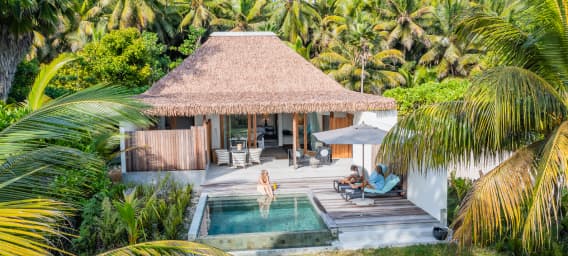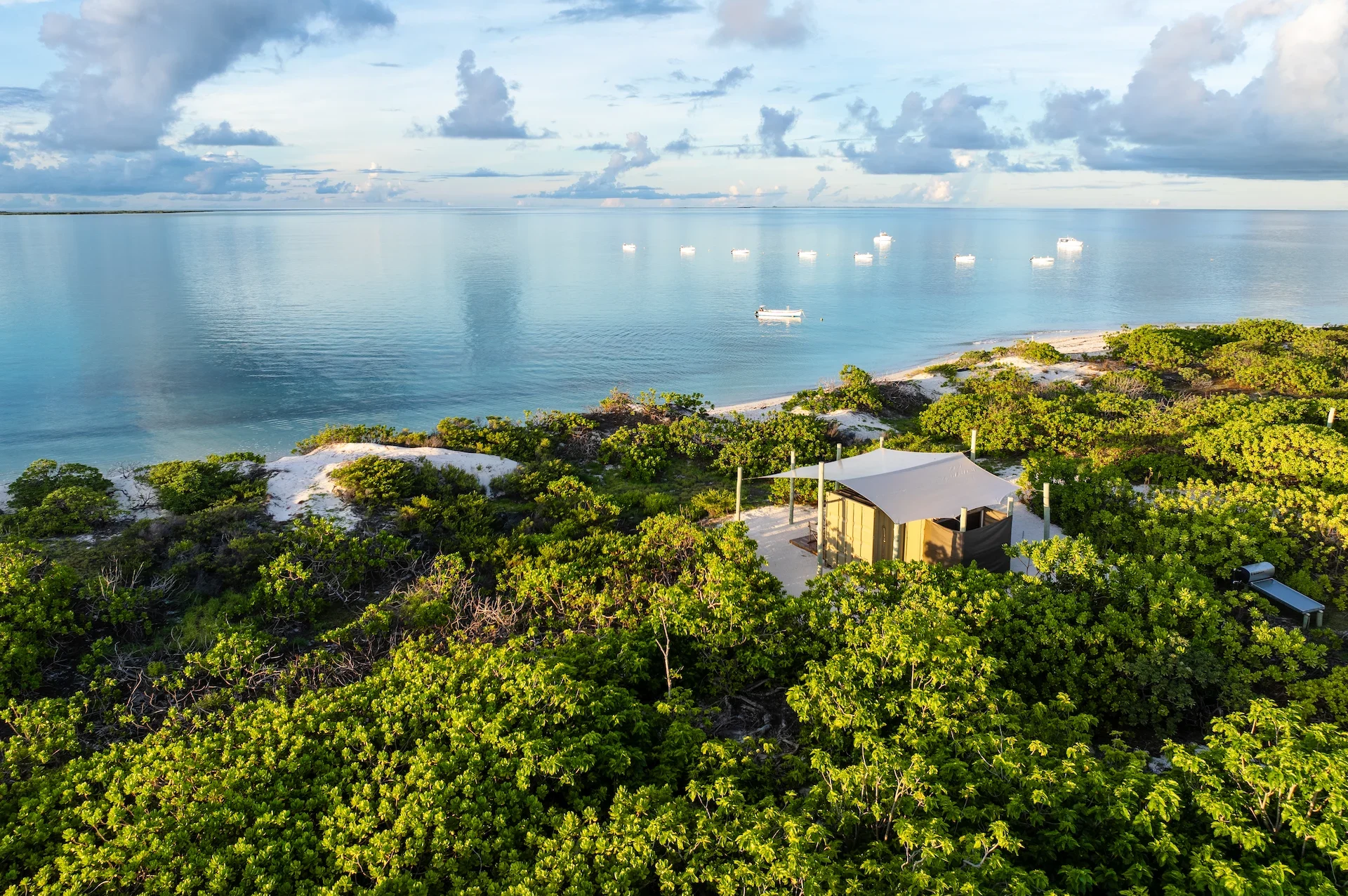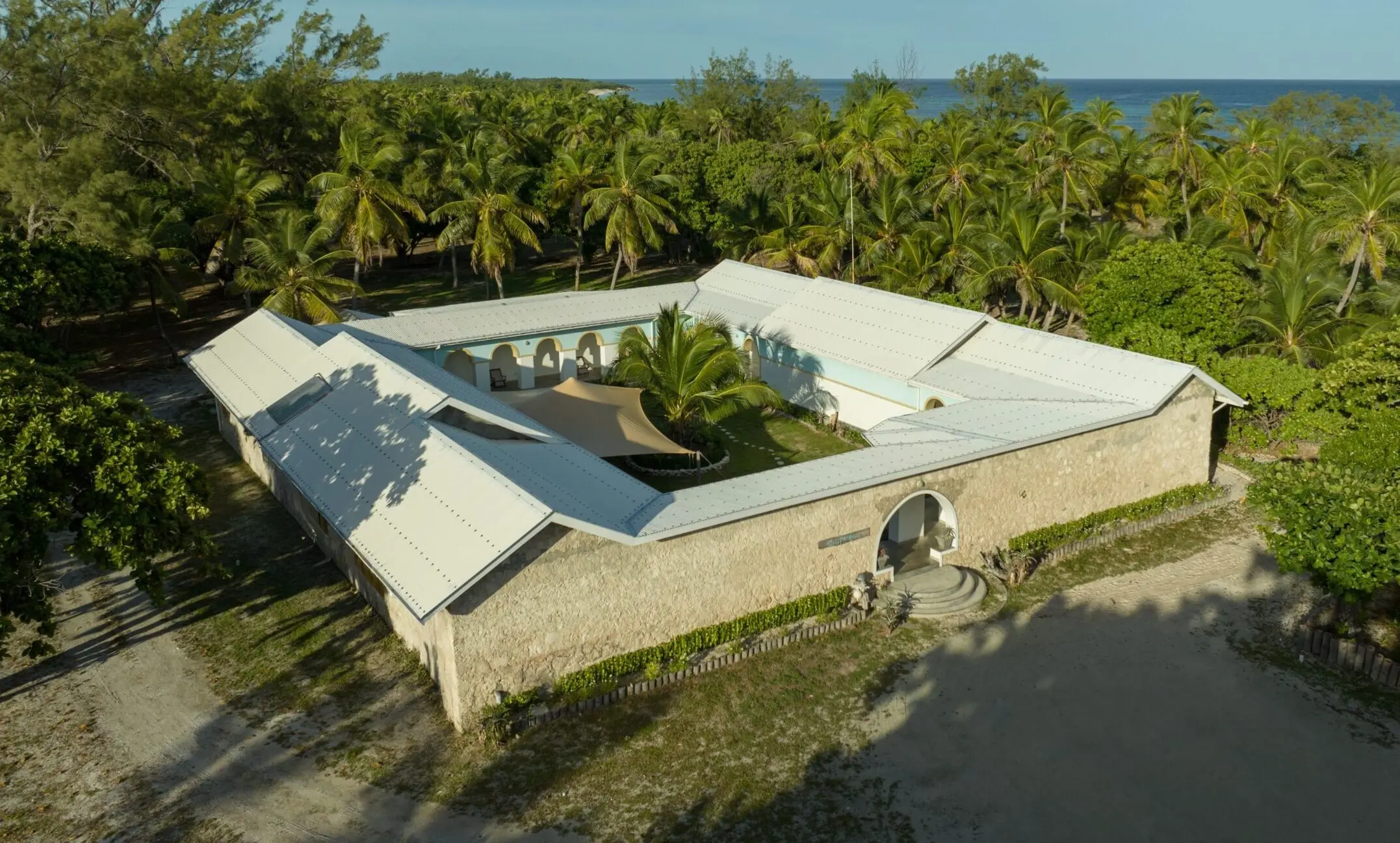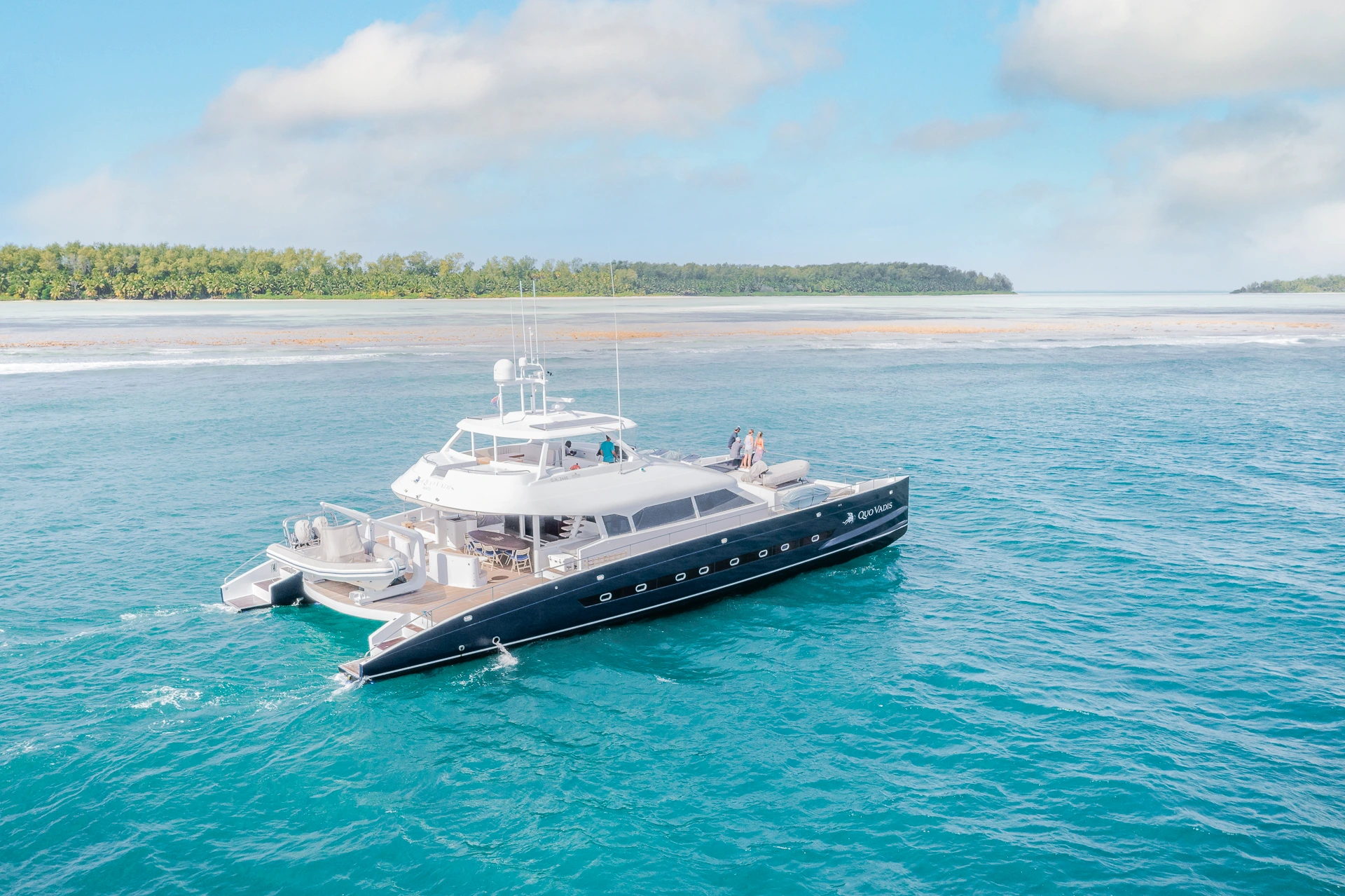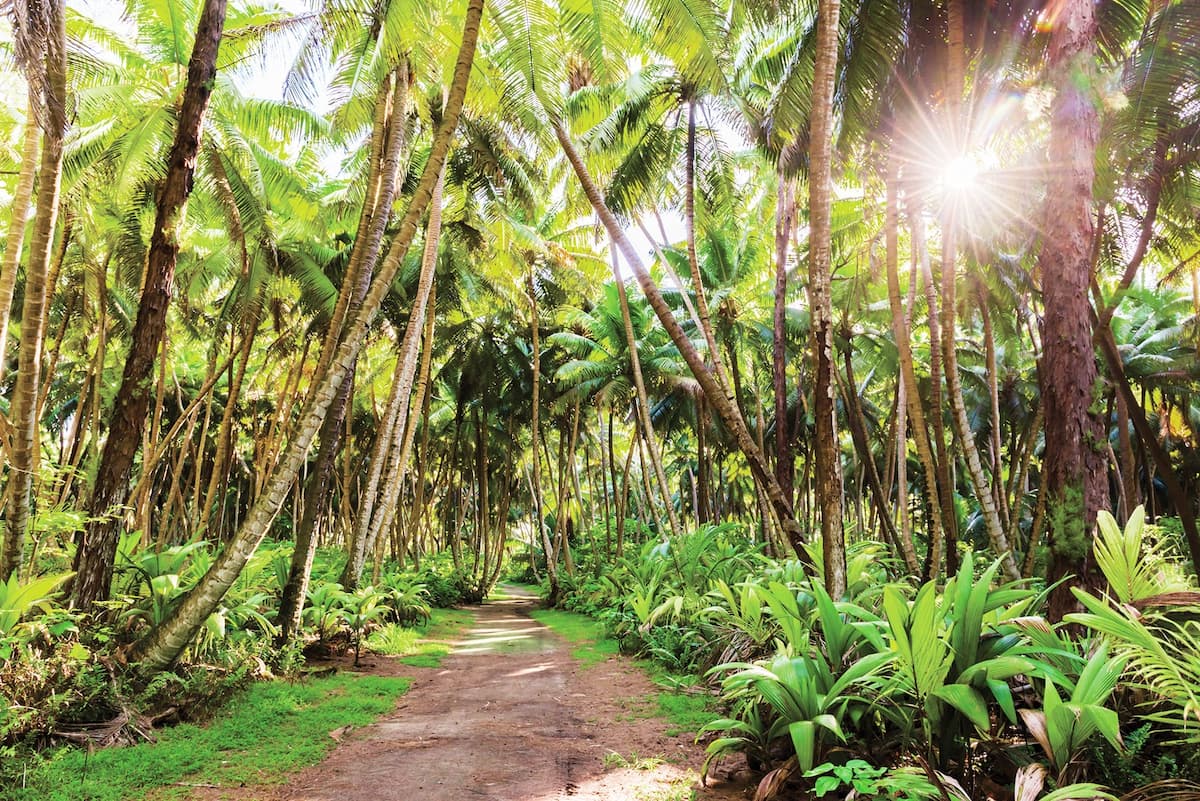The partners managing the conservation and preservation of the unique biodiversity of Alphonse, Cosmoledo and Astove atolls are happy to share with you our first newsletter for 2022 highlighting project news, developments and incredible nature sightings from the Outer Islands of Seychelles.
1. MONITORING THE SPATIAL ECOLOGY AND POPULATION DYNAMICS OF THE REEF MANTA (MOBULA ALFREDI) IN THE OUTER ISLANDS
It has been an incredible year for mantas, with over 258 sighted around the St François atoll, more than double the sightings for 2020. These high numbers are likely to be a factor of improved collaboration across the departments, but regardless of an increase in survey effort there definitely appeared to be many more mantas from October-December than anyone on Alphonse had ever seen before, which was appreciated by guests and staff alike.
Moreover, many of the individuals seen were either new or inter-island movements which is incredibly exciting for understanding the interconnectivity of the Seychelles manta population. One of the biggest surprises of the Seychelles Manta Ray Project to date has been how few mantas had been seen at more than one location (mantas are monitored by Save Our Seas Foundation at D’Arros, St Joseph’s, and Poivre atolls) with only three movements confirmed since 2016.
During December – January that total increased to nine, 3x more in one month than the 5 years previously! We are not entirely sure why the mantas seem to be on the move more than at any previous point since the project began, however, it could be linked to the delayed start of the NW Monsoon. The strong, dry South-Easterly winds continued to blow until December which could have some effect on ocean currents and thus plankton movements- ie. manta food.
Another heart-warming aspect of the increase in manta sightings is a juvenile male manta called Even Steven was seen again in December; he used to be a well-known regular around Alphonse but hadn’t been seen since 2018. We were all pleased to see him alive, well, and ageing nicely. 2021 also saw the approval of adding 20 mantas to the Alphonse acoustic network to monitor their spatial ecology and resident times around the atolls- read more below.
The adoption scheme was also set up to raise funds for the project whereby every newly sighted manta goes up for adoption, giving guests a chance to name it and receive an adoption pack and updates whenever ‘their’ manta is resighted.
2. WEDGETAIL SHEARWATERS (ARDENNA PACIFICA) HAVE THE MOST SUCCESSFUL BREEDING SEASON YET
Unfortunately due to the presence of invasive species, namely rats and cats which are both predators on the eggs and chicks of this ground-nesting seabird, the population of wedgetail shearwaters on Alphonse had dwindled to just two successful chicks in 2016. This is on major conservation concern as these birds are maternally philopatric, returning to the same colony every year with only a handful of recognized breeding colonies around the world.
Due to some simple, ongoing conservation measures put in place since 2016 such as vegetation management and predator control the population has bounced back. The number of successful chicks has increased steadily every year since 2017 and the current breeding season which began in September 2021 and will finish around March/April 2022 currently has over 100 active burrows, moreover, they can now be heard nesting around the beach bar and other areas of Alphonse which might indicate an even larger colony on the island.
3. POTENTIAL HYBRIDISATION EVENT IN NESTING BIRD COLONY AT ST FRANçOIS!
During the annual monitoring of the black nape tern (Sterna sumatrana) nesting colony at St François, ICS noticed a roseate tern living happily amongst the colony and attempting to breed with the black napes, a sighting which has been noted every year since 2007. This is a suspected hybridisation event that, if confirmed, will be only the second documented example of a pairing between these two species in the world!
4. SUCCESSFUL SECOND YEAR FOR BREEDING PAIR OF RED FOOTED BOOBIES (SULA SULA) ON ST FRANçOIS
What is believed to be the same pair that nested in 2020 for the first time since ICS began recording seabird activity in 2007, has successfully nested again in 2001 in the same tree on St François Island. It was highly likely in the past before human disturbance, habitat alteration, and development on the island (albeit very low levels on St François) there would have been a much larger nesting colony of red footed boobies.
We hope that this pair will inspire a few more pairs to stay and breed, demonstrating the success of the conservation management of the islands and the need for effective legal protection.
5. BIRD OF THE YEAR: JACOBIN CUCKOO (CLAMATOR JACOBINUS
This unusual sighting in January 2021 was a first for Alphonse and exciting addition to the list of vagrant birds stopping by these remote islands on their migration routes. The unusually crested cuckoo species migrate across the Indian Ocean from its summer breeding grounds in India to over-winter areas in tropical and sub-Saharan Africa.
6. ACOUSTIC TELEMETRY AND FISHERY SUSTAINABILITY
In September it was decided due to the ongoing success of the project using acoustic telemetry to monitor the spatial ecology of the giant trevally, that the number of species being recorded on the array should be extended and the array will become a permanent fixture around the Alphonse Group.
This is strengthening and extending our collaboration with Drs Andy Danylchuk, Steve Cooke, and Lucas Griffin at the University of Massachusetts Amherst who are providing huge experience and expertise in angling science and fisheries conservation. The network of acoustic receivers will be called the Alphonse Underwater Tracking Observatory (AUTO) which will be maintained and managed by the Alphonse Foundation, utilising guest conservation contributions.
This is a huge green light for conservation potential around the atoll group as many different species can be tagged and added to the array, monitoring not just their spatial ecology and movement patterns but also residency times and potential spawning aggregation sites, see below for upcoming tagging projects.
7. SPATIAL ECOLOGY AND POST-RELEASE BEHAVIOUR OF GIANT TREVALLY (CARANX IGNOBILIS
The flagship acoustic project around the Alphonse Group is coming to the end of its three-year data collection period and has already thrown out some interesting preliminary results. GTs seemingly have far narrower ‘home ranges’ than would previously have been imagined, with the average area where GTs spend 50% of their time being 0.9km2, although the data does also demonstrate they do periodically travel within and between the two atolls.
This has implications for the sustainability of the fishery as the data has also demonstrated the guides know exactly where the GTs hang out, with the catch pressure and hook frequency being the highest in GT primary habitats. The next data download in March will be critical as effects from the enforced fishery closure due to Covid and the gradual increase in angling activity will be visible, this will allow effective conservation management strategies to be developed.
Many anglers who have visited the flats of the Alphonse Group have helped with the fisheries project by catching and microchip tagging GTs. This allows us to gain an estimate of population size over time and demonstrates the narrow habitats these fish occupy, with many recaptures being very close to the original tagging location.
Interestingly more than 600 fish have now been microchipped but there have been only 13 recaptures, this potentially demonstrates that the population of GTs on St François is large and we are far from the point where we have enough tags to be able to estimate population size, all positive news as it shows there are enough fish to satisfy even the most wiley GT fisherman and the angling effects are not visibly impacting the health of the population.
8. NEW CONSERVATION TEAM MEMBER ON ALPHONSE
We are delighted to announce the addition of a second Conservation Ranger to Alphonse with Annie Gendron filling the role. She assisted the team previously in the year and has proved to be an enormous help with the increasing portfolio of projects. Poke your head into the ICS office on your next visit to the island and say hi!
UPCOMING CONSERVATION HIGHLIGHTS FOR 2022
1. MONITORING THE SPATIAL ECOLOGY AND POST-RELEASE PHYSIOLOGICAL RESPONSES OF MILKFISH (CHANOS CHANOS)
A very new and exciting project is expanding our inventory of species currently being monitored using the AUTO acoustic array. milkfish are an enigmatic species highly prized within the salt-water angling community due to the intense and prolonged fight they give when hooked, yet very little is known about their ecology and how they utilise the marine environment, specifically atolls.
Moreover, the unusual method of catching them on fly was developed and honed by legendry fishing guides around Alphonse so they are a keen local favourite; as they are passive feeders, gulping plankton and filamentous algae, they won’t actively chase and eat a fly so the fly has to be carefully placed along their feeding path.
Post-release stress response will be measured by taking a blood sample from the live fish and measuring lactate and glucose, both indicators of over-exertion, intense muscular activity, and metabolism. This will finally answer an angling myth that milkfish fight so hard on the end of a line because their muscles don’t build up these stressors, stay tuned for results!
The fieldwork has already started with Drs Danylchuk and Griffin from the University of Massachusetts Amherst is assisted by a team made up of Blue Safari staff and ICS, all 15 milkfish have been tagged with acoustic transmitters (a feat very few believed would be possible in 10 days!) with a few remaining fish needed to conduct blood work.
Interestingly some fish that underwent tag surgeries were pregnant females with eggs, indicating they are reproducing around Alphonse, they were all released happily and healthily to continue contributing to the local milkfish population and beeping away on the array!
2. MONITORING SPATIAL ECOLOGY AND RESIDENCY TIMES OF REEF MANTAS (MOBULA ALFREDI)
Another much-anticipated addition to the acoustic network will hopefully be 20 tagged mantas, with the fieldwork expected to start in November 2022 depending on international travel and meeting our fundraising targets.
Being able to monitor the movement patterns of the mantas around Alphonse will finally shed some much-needed light on the big questions of the Seychelles Manta Ray Project: when are the mantas around the island group and how long do they spend here, and does that vary by sub-set of the population, and how are they using the unique structures of the atolls?
Moreover, there is an existing acoustic array at D’Arros island in the north of the Amirante chain which is being maintained and monitored by Save Our Seas Foundation, another partner of the Seychelles Manta Ray Project with ICS and the Manta Trust. Mantas tagged at Alphonse will show up on their array and vice-versa which will also confirm the frequency of inter-island movements for the sample of mantas tagged.
3. REEF FISH BIODIVERSITY ASSESSMENT AND INVENTORY
Utilising a grant awarded by the Seychelles Climate Change Adaptation Trust (SeyCCAT), a team comprising of Blue Safari, ICS, and Marine Conservation Society Seychelles (MCSS) will conduct surveys of as many marine habitats as possible in 14 days to identify and record as many different species of reef fish as possible around the Alphonse Group.
The biodiversity of fish is often used as a proxy for the overall health of tropical coastal ecosystems, particularly coral reefs. This study will be the first time an inventory of the species present in these remote, pristine atolls will be made which can then be used as a proof of concept to create an inventory of species for the outer islands of Seychelles, an area of remote marine ecological sensitivity and interest.
The study also hopes to identify hotspots of particular biodiversity and discover range expansions for a variety of species (and who knows, possibly find a brand-new fish!).
4. BLUE CARBON INITIATIVE: MAPPING SEAGRASS AROUND SEYCHELLES
A team from the University of Oxford and local partners including ICS took part in an international project which is set to ascertain how much carbon is stored in the world’s seagrass habitats and for them to form a commodity as part of the Blue Carbon initiative.
The fieldwork for the inner islands and the Amirante Group of outer islands took place in December where the team took cores of seagrass and their root systems for analysis and dived down to ground-truth satellite imagery of seagrass. The fieldwork also served as training for the ICS team, and much of the equipment was left behind so ICS can continue the fieldwork for many of the outer islands including Alphonse, Cosmoledo, and Astove in February.
CONTRIBUTE TO CONSERVATION
The critical projects conducted by ICS and Blue Safari in the outer islands of Seychelles have been successful in creating long-term monitoring programmes because of the successful model of the Foundation and the generosity of our clients. If you would like to help, any contribution of any size is greatly appreciated.
Please go to the following link to see a copy of the Foundation brochure with project details: Alphonse Foundation Brochure
Or email – eleanor@bluesafari.com or alphonse@ics.sc
previous blog
- Share:
next blog
